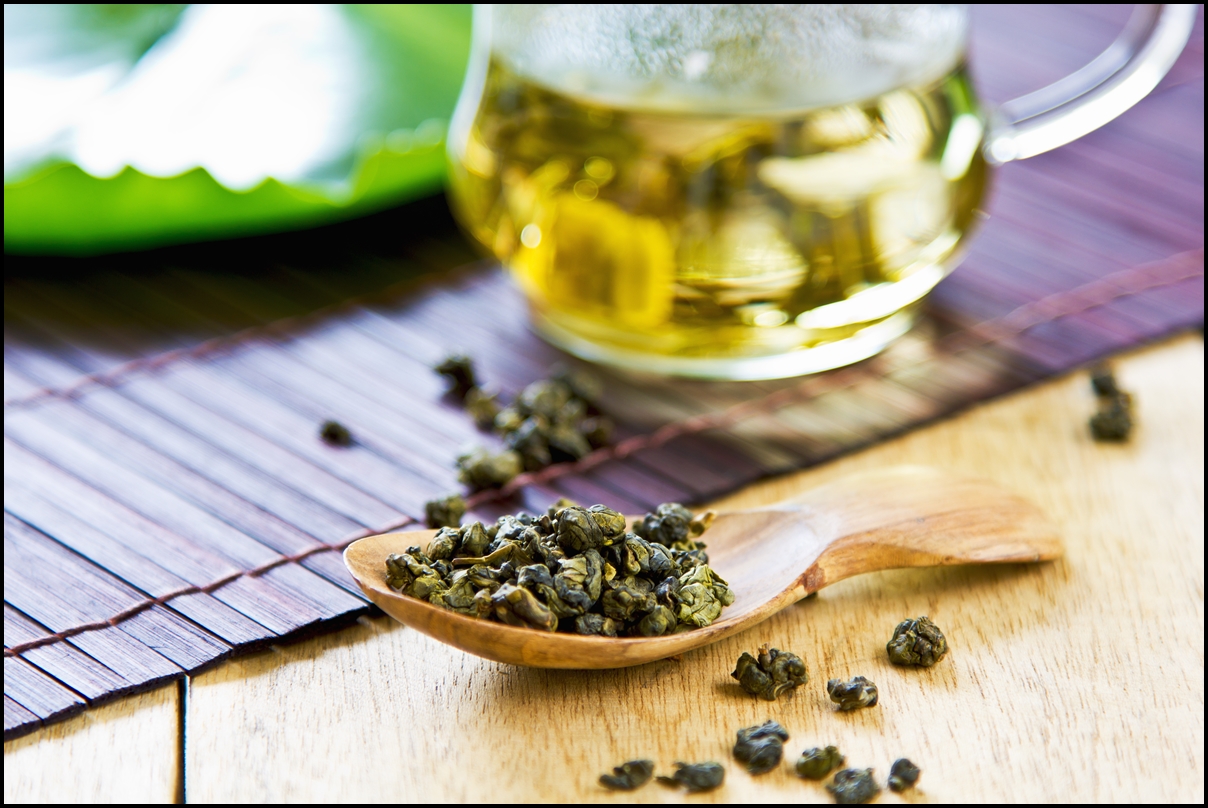
OOLONG TEAS!
Oolong tea are semi-green.
They have a flowery, peach aroma and do not need milk, sugar, or lemon!
Production of Oolong Tea
Withering
Picked leaves are spread out (inside and/or outside in the sun) to soften the cell walls of leaves. This draws the moisture to the surface for evaporation, softens the leaves, begins natural enzymatic fermentation and sets up the next stage of processing. This also reduces the grassy taste of tea leaves.
Tossing/Bruising (Turning Over)
Known as “Shaking” in Chinese, because in the old days, the leaves were simply shaken in a wicker basket. Today, this step is done with the aid of machines to further break down the leaves by mechanical means (as opposed to chemical means as in “Withering”). This improves oxidation and mixes chemical elements from the stems with the leaves, removing bitterness and balancing the flavour of the tea.
Oxidization (Partial and Full)
This step used in Oolongs and Black Teas continues the natural process of fermentation by allowing the leaves to rest after the Withering or Tossing/Bruising (Turning Over) steps. The time allowed determines the amount of fermentation for the tea being made. At this point, the leaves turn to a darker green or even a red colour, due to the breaking down of the cell structure of the leaves. It is at this stage where the tea begins to develop its grassy, flowery or fruity taste characteristics.
“Kill-Green” (also known as Fixing”)
Stops the natural fermentation and growing processes within the leaves without damaging them. Steaming the leaves, hand pressing in a hot pan and baking techniques are used. This also sets up the next step for Rolling/Forming the leaves.
Rolling/Forming
Leaves are passed through hot and/or cold rollers to slightly break down the leaves, which establishes the shape of the leaves and intensifies the tea flavour.
Drying
Establishes the final moisture content of the leaves, stops fermentation, prevents mold growth, removes any grassy leaf taste and develops the tea’s aroma. Sun drying, pan heating and hot air methods are used.
Firing
(Oolongs) Various methods of roasting in a pan or a basket with charcoal or electric heat are used to give a smoky flavour or a fruity characteristic.
Oolong tea origins
Oolong represents a true artisan mastership of tea processing. The appearance, shape and flavor of an oolong tea can vary wildly depending on the region where it’s grown and how it’s processed. The origins of oolong are claimed in both China and Taiwan and the tea is still highly revered in both countries today. Those from Taiwan go by the name of Formosa Oolongs, and are often fermented a little longer than the lighter China Oolongs. The China Oolongs are in turn more heavily roasted than those from Taiwan. The best China Oolongs originate in Fujian and Guangdong Provinces.
Taiwan’s most famous oolongs are traditionally less oxidized (10% to 40%) and therefore tend to be greener in color and lighter in flavor than Chinese oolongs. The styles of oolong produced across the country vary just as much as the styles of wine that come out of France. Some oolongs are rolled into small tight balls, while others are twisted into long leafy strands. Some grow in remote mist-covered mountains, while others thrive in temperate bamboo-forested foothills. Some are plucked in spring for a flowery herbaceous flavor, while others are picked in winter and roasted for a hearty woodsy flavor.
While the most famous oolongs originated in China and Taiwan, different styles of oolong are being made in other parts of the world today. India, Sri Lanka, Japan, Thailand and New Zealand are just a few of the countries producing some of the world’s oolong teas.
The best Oolong teas, like many Chinese green teas, are still produced by individual farmers. These teas are unique, expensive, do not keep long, and are not often exported. Many of them fall onto the category of scared garden teas, which during Imperial times were produced only for the Emperor and the court, and even today are still very hard to come by.
Oolong means black dragon, after the long, twisted black leaf which characterises Oolong tea.
